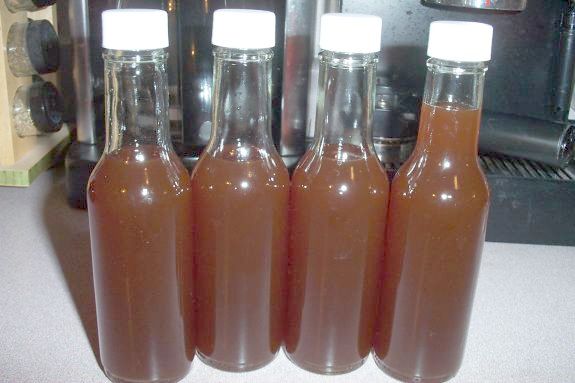Bitter, bitter, bitter on the inside...

When I put up that teaser post about vanilla, I had honestly intended to blog again before the vanilla was ready! Unfortunately, although I've engaged in a good number of cooking projects since then - indeed, I've been cooking faster than I can blog about it - I've also been slammed with paid work, which has left me with little time or energy to write about those projects. It's one of the funny things about writing: when you do it for money all day long, it makes it hard to motivate yourself to do it for fun after hours. After working with my brain all day, I like to work with my hands after 5 o'clock, which is one of the reasons I enjoy cooking so much.
Anyway, on to the post.
I've mentioned a couple of times on this blog that I've become something of a cocktail aficionado, but I think it's now safe to say that I'm a full-on cocktail geek: I've made my own bitters.
Bitters are one of those things that cocktail geeks get excited about in a way that civilians never really understand. Any time a cocktail geek posts about bitters, they'll usually have a title with a pun on the word "bitter," and somewhere in the post they'll point out that originally, a cocktail had to have bitters by definition, as the earliest documented definition of the word "cocktail," from the May 13, 1806 issue of the Balance and Columbian Repository, was as follows: "Cock tail, then is a stimulating liquor, composed of spirits of any kind, sugar, water and bitters it is vulgarly called a bittered sling" (source). They'll also point out that, in the cocktail's heyday, there were dozens, perhaps hundreds, of varieties of bitters, almost all of which are now defunct.
Now, when discussing bitters, there's an important distinction to be made between "potable" and "non-potable" bitters. Potable bitters are intended for drinking on their own, and they include apéritif and digestif bitters like Campari, Cynar, Underberg, Unicum, Fernet Branca or Amer Picon; some would even include vermouth. Non-potable bitters are used in small dashes to liven up other drinks, and are by definition too bitter to be drunk on their own - that's why Angostura, which actually has a pretty high alcohol content, can be sold in grocery stores in Canada.
I caught the bitters bug fairly early on in my explorations of the mixed drink. Some would say this is because I'm a bitter person myself. (See! What did I say about those puns?) Everyone knows Angostura bitters, and for good reason: they're one of the best on the market, and they're available everywhere. For years, I've always kept a bottle around. But I learned early on that one of the more popular types of bitters (back when bitters were popular) was orange bitters. And a small company in upstate New York managed to keep them alive for years, to finally land in the modern cocktail revival. So my first act as a bitters fiend was to order some Fee Brother's West Indian Orange Bitters, along with their Aromatic Bitters (analogous to Angostura bitters). While I was on the phone, their customer service representative also talked me into ordering the Peach Bitters. By then, I was well and truly smitten, so on my next trip to New York, I picked up a bottle each of Peychaud's bitters (a New Orleans brand that's essential for a Sazerac cocktail) and Regan's Orange Bitters No. 6, a spicier, more complex orange bitters than the Fee Brothers version. Now, I have 8 different kinds of commercial bitters in my liquor cabinet, and am always on the lookout for opportunities to acquire more. (Which invariably causes my husband to roll his eyes.)
The next logical step was to make my own. Well, I suppose it's not completely accurate to say I've made "my own" bitters; in fact, I've made Robert Hess's. The process is simple, involving nothing more than assembling some herbs, macerating them, simmering them, then mixing the liquids together with a little caramel syrup. It takes only about 2 weeks, and is very much worth it: the end result is wonderful. The only problem was acquiring the herbs. Many bitters recipes call for uncommon bits of roots and bark that you won't find at your local grocery store. (In fact, if anyone knows where I can find things like quassia, angelica, cinchona and wormwood in Toronto, I'd be grateful if you'd drop me a line!) On my most recent New York trip, I stumbled across some gentian, so I picked it up. Fortunately, the other spices called for in the Hess bitters were easy to find; in fact, I already had most of them on hand.
How do they taste? Wonderful. They're spicy and complex, and unrelentingly bitter. They're very well suited to Hess's signature drink, the Black Feather, but my personal favourite use for them so far is the Martinez.
Martinez Cocktail
2 oz. gin
1-2 oz. sweet vermouth
1/6-1/4 oz. maraschino liqueur (No, this isn't the juice from your maraschino cherry jar, it's a fantastic liqueur that isn't currently available in Canada. Pick some up on your next trip to the US, or try substituting Cointreau or a bit of simple syrup. It won't be the same drink, but it'll still be good.)
2 dashes Hess House Bitters
Stir all the ingredients together with ice and strain into a chilled cocktail glass. Cheers!
For more information about cocktail bitters, you can cruise around the burgeoning cocktail section of the blogosphere: start with Robert Hess's own article here, Paul's thoughtful entry in the bitters themed Mixology Monday blogging event here, Jay's taste-test posts here and here, this post at Bar Mix Master (which includes a recipe for Hess House Bitters), and last but not least the dedicated eGullet thread here. That should give you plenty of starting points!
